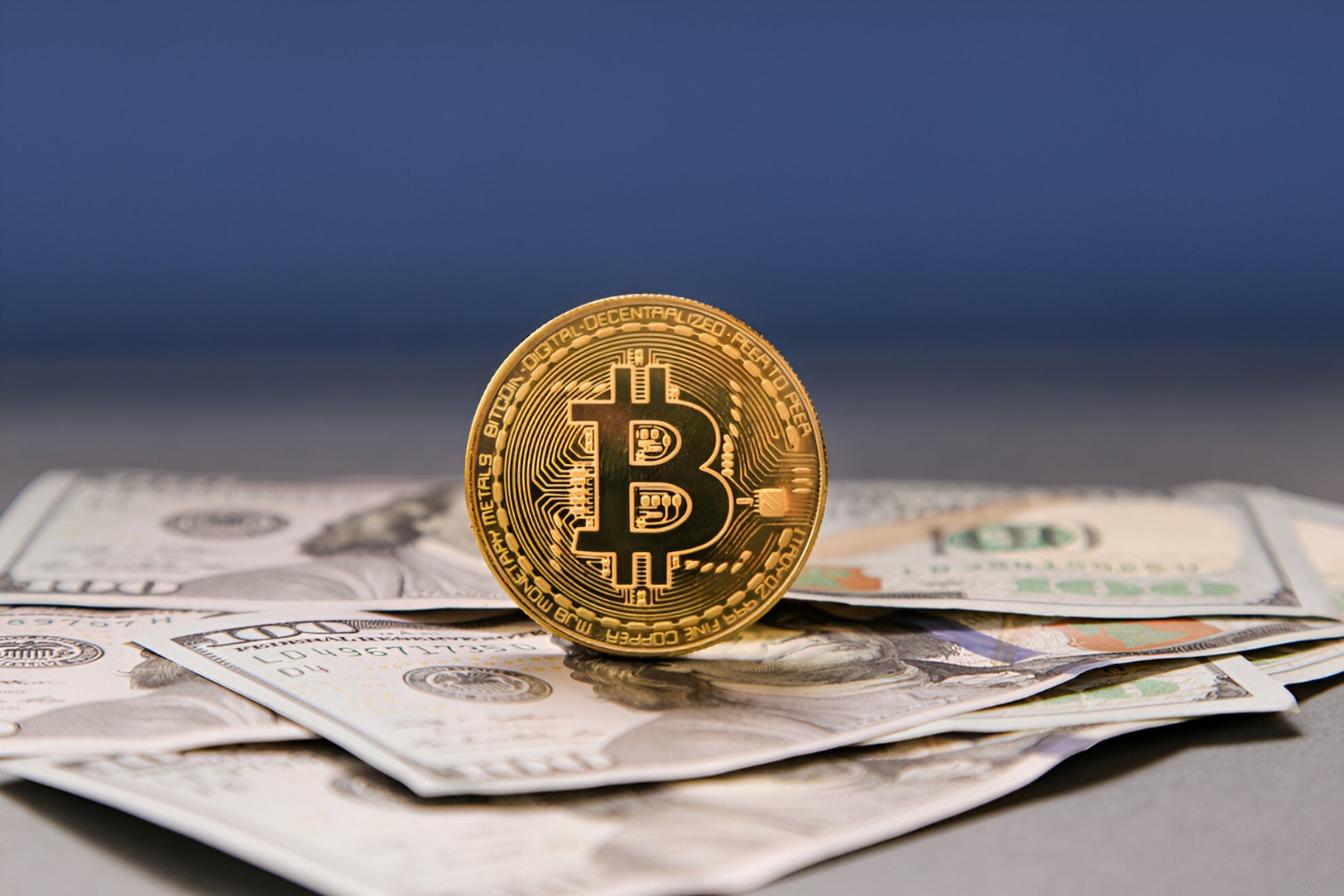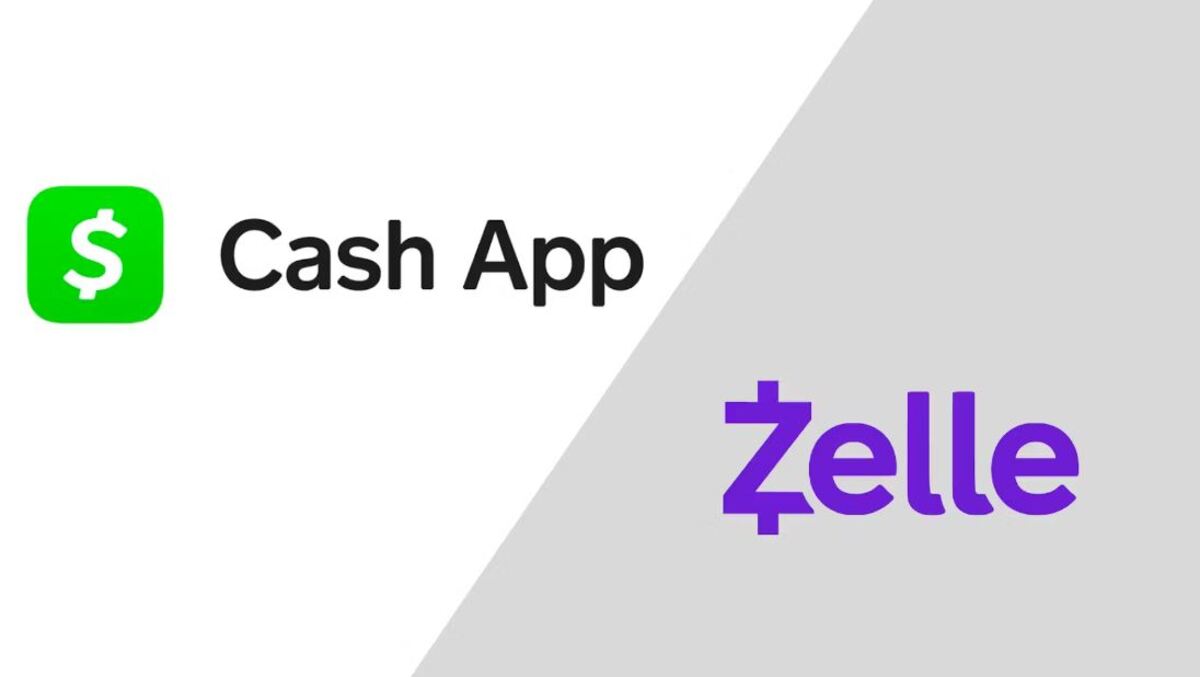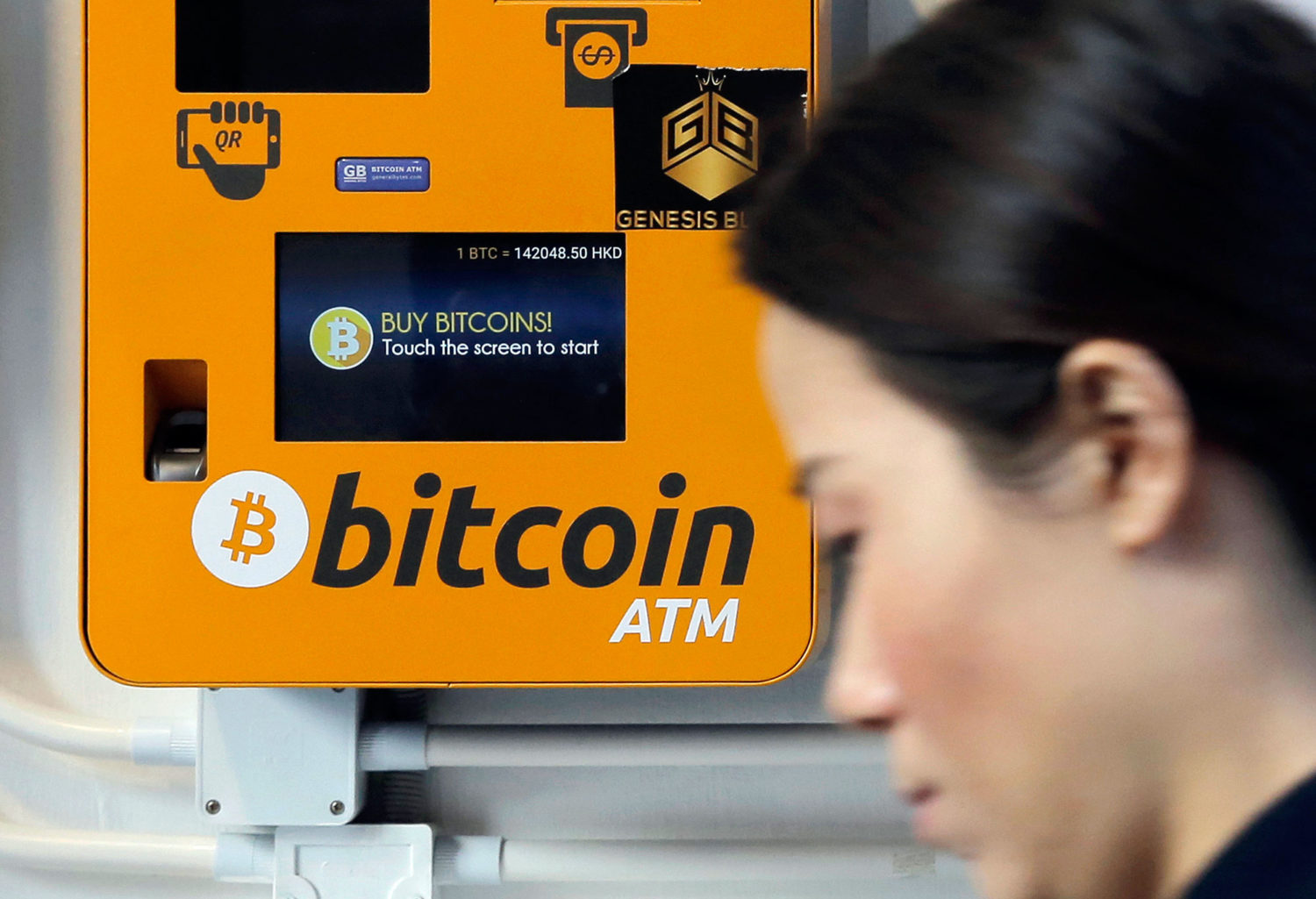Introduction
Welcome to the world of Bitcoin ATMs, where buying and selling cryptocurrencies has become more accessible and convenient. Bitcoin ATMs, also known as BTMs, are physical machines that allow users to purchase Bitcoin and other cryptocurrencies using cash or debit cards. These machines have gained popularity in recent years as crypto adoption continues to grow. But how much does it cost to use a Bitcoin ATM? In this article, we will explore the fees associated with Bitcoin ATMs, specifically focusing on transactions of $1,000.
Bitcoin ATMs work similarly to traditional ATMs, with a few key differences. Instead of dispensing physical cash, Bitcoin ATMs allow users to purchase cryptocurrencies by depositing cash or swiping their debit cards. The machine then transfers the corresponding amount of Bitcoin or other cryptocurrencies to the user’s digital wallet. Bitcoin ATMs usually have a user-friendly interface, making it easy for both beginners and experienced users to navigate.
Although Bitcoin ATMs offer convenience and accessibility, they come with transaction fees. Unlike traditional financial institutions that may charge a fixed percentage or a flat fee, Bitcoin ATMs often have varying fee structures. The fees can be influenced by various factors, such as the type of machine, the location of the ATM, and the provider offering the service. Understanding these factors can help users make informed decisions when using Bitcoin ATMs.
One of the main concerns for users is the cost associated with Bitcoin ATM transactions. The fees can vary significantly, especially when dealing with larger transactions such as $1,000. In the following sections, we will explore the average fees for $1,000 transactions, compare the fees offered by different providers, and provide tips for minimizing these fees.
It’s important to note that Bitcoin ATMs offer convenience at the cost of higher fees compared to other methods of buying and selling cryptocurrencies. However, for some users, the privacy, speed, and accessibility provided by Bitcoin ATMs outweigh the additional costs. By understanding Bitcoin ATM fees and considering alternative options, users can make informed choices that align with their needs and preferences.
How Bitcoin ATMs Work
Bitcoin ATMs provide a user-friendly way to enter the world of cryptocurrencies. Understanding how these machines work is essential for anyone looking to use them for buying or selling Bitcoin and other digital assets.
When you approach a Bitcoin ATM, the first step is to identify yourself. Depending on the machine’s features, you may need to provide identification, such as a government-issued ID or a mobile phone number for verification purposes. This initial step helps ensure compliance with regulations and prevents fraudulent activities.
The next step is to select your transaction type. Bitcoin ATMs typically offer two options: buying or selling cryptocurrency. If you’re looking to purchase Bitcoin, you can choose the “Buy Bitcoin” option. Conversely, if you want to sell Bitcoin and receive cash, you can select the “Sell Bitcoin” option.
Once you’ve selected your transaction type, you will be prompted to enter the amount of cash you want to exchange for Bitcoin or vice versa. Bitcoin ATMs usually allow you to choose from preset denominations or enter a custom amount. It’s important to note that some Bitcoin ATMs may have limits on the maximum and minimum transaction amounts.
After entering the desired amount, the Bitcoin ATM will display the current exchange rate and the equivalent amount of Bitcoin you will receive, factoring in the applicable fees. It’s crucial to double-check the details at this stage to ensure accuracy.
The next step involves making the payment or deposit. If you’re purchasing Bitcoin, you can insert the cash directly into the ATM. The machine will scan and verify the funds, ensuring their authenticity. Some machines also allow users to make deposits via debit cards, providing an additional payment option.
For selling Bitcoin, you will need to transfer the specified amount of Bitcoin from your digital wallet to the wallet address provided by the Bitcoin ATM. This transfer typically involves scanning a QR code or entering the wallet address manually. Once the transaction is confirmed and verified on the blockchain network, the Bitcoin ATM will dispense the corresponding amount of cash.
Lastly, remember to collect your receipt after completing the transaction. The receipt will provide important details such as the transaction ID, exchange rate, fees incurred, and the amount of Bitcoin or cash exchanged. It serves as proof of the transaction and can be helpful for record-keeping purposes.
Overall, Bitcoin ATMs aim to simplify the process of buying and selling cryptocurrencies. By following the steps outlined by the machine and ensuring the accuracy of transaction details, users can seamlessly engage with these ATMs and access the world of digital currencies.
Factors that Determine Bitcoin ATM Fees
Bitcoin ATM fees can vary depending on several factors. Understanding these factors can help users gauge the cost of using a Bitcoin ATM and make informed decisions. Here are the key factors that determine Bitcoin ATM fees:
1. Machine Type: Different Bitcoin ATM models can have varying fee structures. Some machines charge a percentage-based fee, while others may have fixed fees. It’s important to consider the type of machine you’re using and understand its fee structure to accurately estimate the cost of your transaction.
2. Transaction Type: Bitcoin ATMs typically offer two types of transactions: buying and selling cryptocurrencies. The fees may differ for each transaction type. Generally, buying Bitcoin incurs higher fees compared to selling Bitcoin for cash. This is because buying transactions involve the Bitcoin ATM provider sourcing and supplying the cryptocurrency, which incurs additional costs.
3. Location: The location of the Bitcoin ATM can also influence the fees. Bitcoin ATMs located in prime, high-traffic areas or areas with limited access to other cryptocurrency services may have higher fees. On the other hand, Bitcoin ATMs located in areas with intense competition amongst operators may have lower fees to attract more customers.
4. Regulatory Compliance: Compliance with local regulations and Know Your Customer (KYC) requirements can impact the fees charged by Bitcoin ATMs. ATMs that require thorough identity verification, such as scanning identification documents, may have higher fees to cover the costs of compliance and regulatory processes.
5. Operator Costs: Bitcoin ATM operators incur various costs, including machine maintenance, customer support, and software updates. These costs are often passed on to the users through fees. Some operators may offer additional services or enhanced customer support, which can contribute to higher fees.
6. Market Volatility: The volatile nature of the cryptocurrency market can affect Bitcoin ATM fees. Higher market volatility often leads to higher fees, as ATM operators need to account for potential price fluctuations between the time of the transaction and the confirmation on the blockchain network.
7. Provider Reputation: The reputation and credibility of the Bitcoin ATM provider can also play a role in determining the fees. Established and reputable providers may warrant higher fees due to their track record, reliability, and additional services offered.
It’s important to note that the factors mentioned above are not exhaustive, and fees can vary significantly between different Bitcoin ATMs. Before using a Bitcoin ATM, it’s recommended to research and compare the fees charged by different providers in your area. This will help you find the best balance between cost and convenience for your cryptocurrency transactions.
Average Bitcoin ATM Fees for $1,000 Transactions
When it comes to Bitcoin ATM fees for $1,000 transactions, it’s important to note that these fees can vary significantly depending on factors such as location, machine type, and operator costs. However, we can provide an overview of the typical fee ranges you might encounter when using a Bitcoin ATM for a $1,000 transaction.
The average Bitcoin ATM fees for a $1,000 transaction range from 5% to 10% of the total transaction amount. This means that on a $1,000 transaction, you can expect to pay anywhere between $50 and $100 in fees. It’s worth noting that these percentages may vary depending on the specific factors mentioned earlier.
The fees for buying Bitcoin through a Bitcoin ATM are typically higher than the fees for selling Bitcoin for cash. In some cases, the fee for buying Bitcoin may reach up to 15% or more, while the fee for selling Bitcoin can be as low as 2% to 5%. This discrepancy is due to the additional costs incurred by the Bitcoin ATM operator when purchasing Bitcoin on behalf of the user.
Additionally, some Bitcoin ATMs may charge additional fees for certain services, such as generating a paper wallet or sending Bitcoin to an external wallet. These service-specific fees are typically small and are in addition to the transaction fees.
It’s important to consider these fees when using a Bitcoin ATM, as they can significantly affect the total cost of your transaction. While Bitcoin ATMs provide convenience and accessibility, it’s essential to compare fees from different providers to find the most cost-effective option.
Furthermore, it’s important to note that the fees charged by Bitcoin ATMs are typically higher than those charged by traditional cryptocurrency exchanges. This is due to the extra convenience and privacy offered by Bitcoin ATMs, as well as the additional costs associated with operating physical machines.
Before using a Bitcoin ATM, it’s recommended to research the fees charged by different providers in your area. This will help you find a Bitcoin ATM that offers competitive fees for your $1,000 transaction. Always review the transaction details carefully to ensure transparency and accuracy in the fee structure before proceeding with any Bitcoin ATM transaction.
Comparing Bitcoin ATM Fees from Different Providers
Bitcoin ATMs are offered by various providers, each with their own fee structures and pricing models. When considering using a Bitcoin ATM, it’s important to compare the fees charged by different providers to ensure you’re getting the most competitive rates for your transactions. Here are some factors to consider when comparing Bitcoin ATM fees from different providers:
1. Percentage-based Fees: Some Bitcoin ATM providers charge a percentage-based fee, where the fee is a percentage of the transaction amount. For example, if a provider charges a 7% fee on a $1,000 transaction, the fee would be $70. It’s worth comparing these percentage fees to find the provider that offers the lowest rate.
2. Fixed Fees: Other Bitcoin ATM providers may charge a fixed fee irrespective of the transaction amount. For instance, if the fixed fee is $10, it would apply to both a $100 transaction and a $1,000 transaction. It’s important to consider these fixed fees, as they may be more cost-effective for larger transactions.
3. Additional Service Fees: Some Bitcoin ATM providers may charge additional fees for certain services or features. This may include generating a paper wallet, sending Bitcoin to an external wallet, or using additional security measures. Be sure to compare these additional fees when making your decision.
4. Operational Costs: Bitcoin ATM providers incur operational costs, including machine maintenance, rent, and staffing. These costs can influence the fees charged by the provider. Providers with lower operational costs or higher transaction volumes may offer more competitive fees to attract customers.
5. Location: The location of the Bitcoin ATM can also impact the fees charged by different providers. Bitcoin ATMs in prime locations with high foot traffic may charge higher fees compared to those located in less frequented areas. When comparing fees, consider the convenience and accessibility that the location provides.
Make sure to research and compare the fees charged by different Bitcoin ATM providers in your area. Many providers have websites or mobile apps where they list the fees and provide a fee calculator to estimate the cost of your transaction. Additionally, check for any promotions or discounts that providers may be offering to further reduce the fees.
Remember that while fees are an important consideration, it’s also essential to evaluate the overall quality of service and reputation of the Bitcoin ATM provider. Consider factors such as reliability, customer support, and security when making your decision.
By comparing Bitcoin ATM fees from different providers, you can find the most cost-effective option that aligns with your transaction needs while ensuring a seamless and convenient experience.
Tips for Minimizing Bitcoin ATM Fees
Bitcoin ATM fees can add up, especially when conducting larger transactions. However, there are several strategies you can employ to minimize these fees and make your Bitcoin ATM transactions more cost-effective. Here are some tips to help you save on Bitcoin ATM fees:
1. Research the Fees: Start by researching the fees charged by different Bitcoin ATM providers in your area. Look for providers with competitive fee structures or promotional offers that can help lower the cost of your transactions.
2. Compare Providers: Don’t settle for the first Bitcoin ATM you come across. Compare the fees, services, and reputation of different providers. Look for providers with lower fees or discounts on larger transactions to maximize your savings.
3. Opt for Percentage-based Fees: If given a choice between percentage-based fees and fixed fees, consider opting for the percentage-based fee structure. This can be more cost-effective for smaller transactions, as the fee amount scales with the transaction size.
4. Plan for Larger Transactions: If you anticipate making larger transactions, consider planning ahead to minimize fees. Bitcoin ATMs often charge a percentage fee, so consolidating multiple smaller transactions into a single larger transaction can help save on fees.
5. Use a Digital Wallet: Instead of purchasing Bitcoin directly from the Bitcoin ATM, consider using a digital wallet to transfer the cryptocurrency to the ATM’s address. This way, you can take advantage of lower fees associated with transferring funds to the ATM rather than buying from it.
6. Take advantage of Limit Orders: Some Bitcoin ATMs offer limit orders, allowing you to set the desired exchange rate and wait for the market conditions to meet your criteria. By utilizing this feature, you can potentially secure a better exchange rate and reduce the impact of fees on your transaction.
7. Be Mindful of Timing: Keep an eye on the market and consider conducting your Bitcoin ATM transactions during periods of lower volatility. This can help minimize potential price fluctuations and reduce the impact of fees on your transaction.
8. Consider Alternative Methods: Bitcoin ATMs can be convenient, but they may not always offer the most cost-effective option. Consider exploring alternative methods, such as online cryptocurrency exchanges or peer-to-peer trading platforms, which may have lower fees for buying or selling Bitcoin.
Remember, while minimizing fees is important, it’s essential to prioritize security and reliability when using Bitcoin ATMs or any other cryptocurrency service. Always conduct transactions with reputable providers and take necessary precautions to protect your digital assets.
By following these tips, you can make your Bitcoin ATM transactions more cost-effective and maximize the value of your cryptocurrency purchases or sales.
Risks and Limitations of Bitcoin ATMs
While Bitcoin ATMs offer convenience and accessibility, it’s important to be aware of the risks and limitations associated with using these machines. Understanding these factors can help you make informed decisions and mitigate potential challenges. Here are some risks and limitations of Bitcoin ATMs:
1. Higher Fees: Bitcoin ATMs typically have higher fees compared to traditional cryptocurrency exchanges. The convenience and privacy provided by Bitcoin ATMs come at a cost. It’s important to consider these fees when using a Bitcoin ATM, especially for larger transactions.
2. Volatility and Price Fluctuations: Cryptocurrency markets are known for their volatility, and Bitcoin ATMs are not immune to price fluctuations. The exchange rate offered at the time of the transaction may differ significantly from the rate when the transaction is confirmed on the blockchain network. This can result in potential discrepancies between the expected amount of Bitcoin and the actual amount received.
3. Limited Availability: While the number of Bitcoin ATMs is growing, they are still not as widespread as traditional ATMs. Finding a Bitcoin ATM in your area may require some research, and you may need to travel to locate one. This limited availability can be a constraint for individuals who don’t have convenient access to a Bitcoin ATM.
4. Regulatory Compliance: Bitcoin ATMs must adhere to local regulations, including Know Your Customer (KYC) and Anti-Money Laundering (AML) requirements. This means that users may be required to provide identification and undergo verification processes. It’s crucial to be prepared for these compliance measures and be aware of the potential privacy implications.
5. Security Risks: While Bitcoin ATMs aim to provide secure transactions, they are not immune to security risks. There have been instances of Bitcoin ATMs being targeted by fraudsters or hackers. It’s essential to exercise caution, use ATMs located in secure areas, and ensure the machines are reputable and properly maintained.
6. Transaction Limits: Bitcoin ATMs may impose transaction limits, both in terms of the minimum and maximum transaction amounts. These limits can vary depending on the machine type and the operator’s policies. It’s important to be aware of these limits and plan your transactions accordingly.
7. Lack of Support: Bitcoin ATMs may not always offer the same customer support as traditional banking services. If you encounter any issues during your transaction, you may need to rely on the operator’s support channels. It’s important to research the reputation of the provider and ensure they have accessible and responsive customer support options.
Understanding these risks and limitations can help you navigate the Bitcoin ATM landscape and make informed decisions. It’s important to weigh the benefits of convenience and accessibility against these considerations to determine if using a Bitcoin ATM aligns with your needs and risk tolerance.
Conclusion
Bitcoin ATMs provide a convenient and accessible way for users to buy and sell cryptocurrencies. However, it’s important to understand the fees, risks, and limitations associated with using these machines. By considering these factors and implementing the tips mentioned in this article, you can make your Bitcoin ATM transactions more cost-effective and secure.
When using Bitcoin ATMs, it’s crucial to research and compare the fees charged by different providers. Look for competitive rates and take advantage of any discounts or promotions that may be available. Additionally, consider alternative methods for buying or selling Bitcoin, such as online exchanges or peer-to-peer platforms, which may offer lower fees.
While Bitcoin ATMs offer convenience, they do come with higher fees compared to traditional exchanges. It’s important to factor in these fees and the potential impact of price fluctuations when conducting transactions. Understanding the risks associated with security, limited availability, and regulatory compliance can help you make informed decisions and mitigate potential challenges.
By following the tips mentioned in this article, such as consolidating transactions, using a digital wallet, and planning ahead, you can minimize fees and maximize the value of your Bitcoin ATM transactions. It’s crucial to prioritize security, reliability, and customer support when choosing a Bitcoin ATM provider.
Bitcoin ATMs play a significant role in the adoption and accessibility of cryptocurrencies. While they come with their own set of fees and limitations, they offer a fast and convenient way to engage with the world of digital assets. As the crypto market continues to evolve, it’s important to stay informed and adapt to new developments in order to make the most of your Bitcoin ATM transactions.
Whether you’re a seasoned cryptocurrency user or a newcomer exploring the space, being aware of Bitcoin ATM fees, risks, and limitations will empower you to make informed decisions and navigate the world of cryptocurrencies with confidence.

























